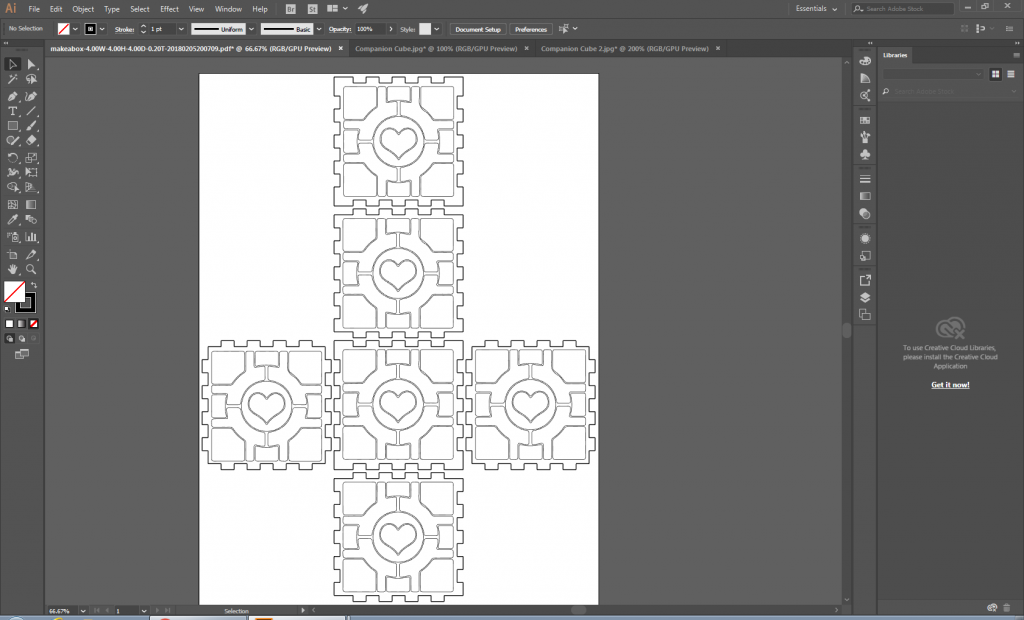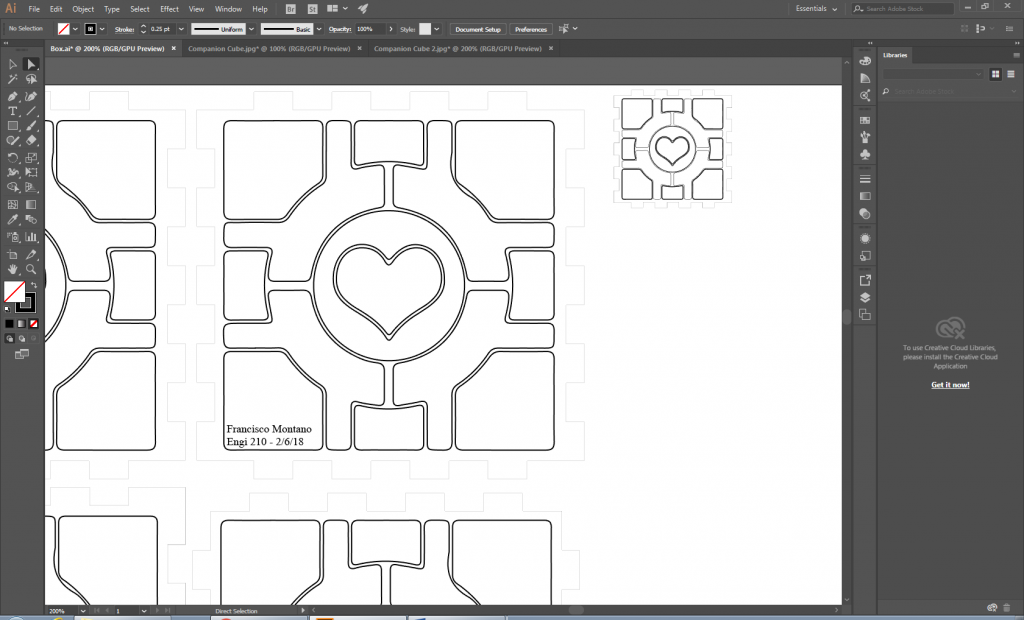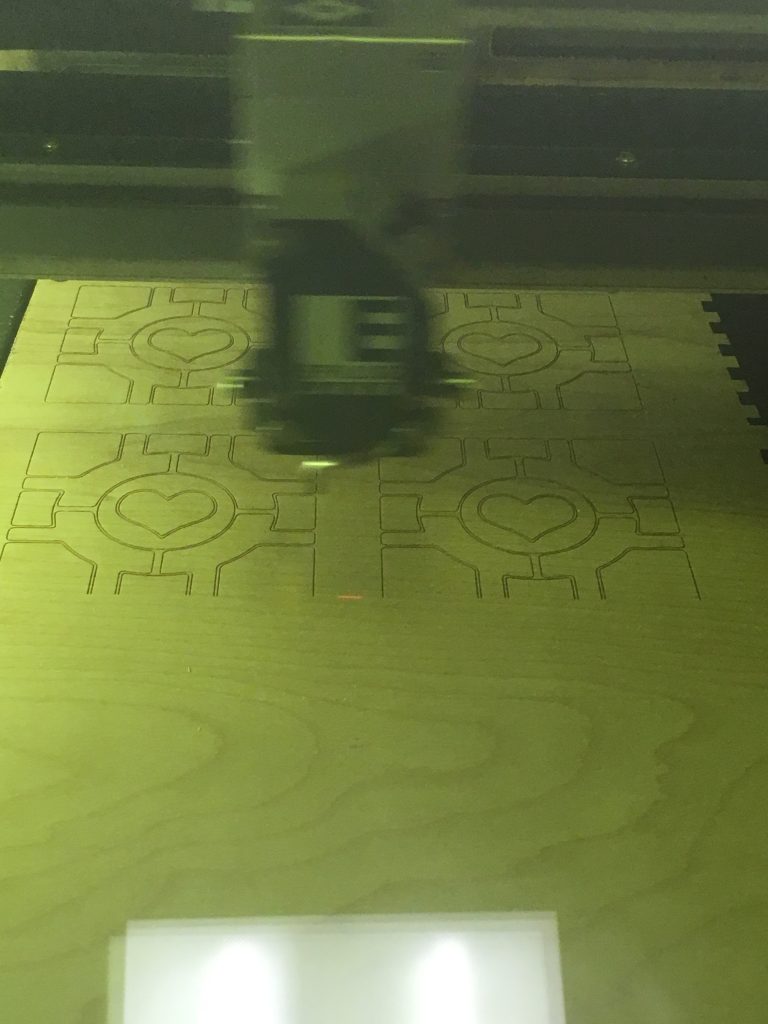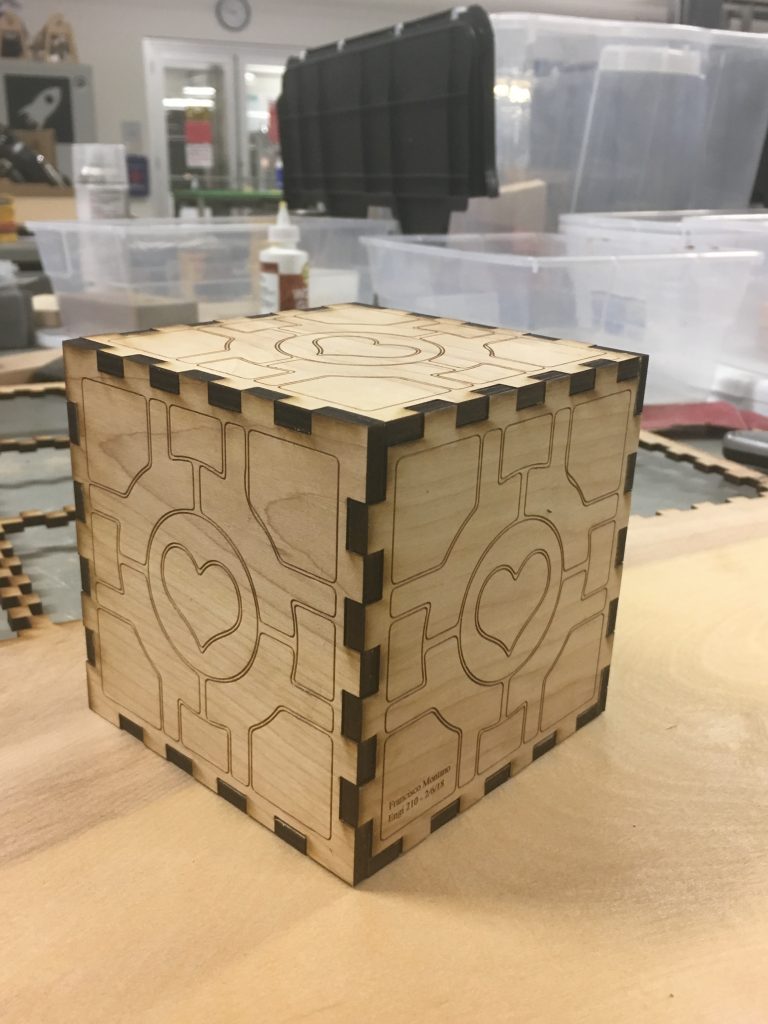Laser. Such a cool word for a cool concept. Who has not imagined themselves controlling the devastating power of light, possibly in sword form? Scientists are no exception. They tamed light, then molded it into a cutting device that anyone can wield. Sure, it can only cut some materials, and it cannot be wielded against the rebels, but it’s one step closer to that future. Now it was my turn to learn this power.
My first project delving into laser cutting was to etch and cut a box. First, I read the instructions and noticed that my box had to be a minimum of 4″ on each side. Simple enough. I googled box maker websites for laser cutting and found this one, which was simple to use. All I had to do was input the desired dimensions of the box and the thickness of the wood and bam! A pdf of the box, ready to be cut. One thing to note is that the Epilog laser cutter in the OEDK has a kerf of 0.004, which a classmate warned me about. If the box had the wrong kerf setting, the pieces would be too loose or too tight. To be safe, I edited the default to be 0.005.
It’s too plain, though. A little Portal never hurt anyone. I downloaded an image of the Companion Box from Portal 2, then used the tracing method outlined in my previous post to create an object to etch on the walls. Some copy and pasting later, this is what I had: 
The next step was to refine the drawing before cutting it. I added my name and class to one of the sides, then reorganized the cubes to take less space. This way the laser cutter wastes less material. Then, I reduced the line weight of the edges. Finally, I added a small scale version of one of the sides to test how the final product would look like. 
The quick test cut in the laser cutter showed that everything should turn out right, so I proceeded with the major cut. A whooping 45 minutes later, I had my box.
Upon closer inspection, the cut did not turn out as well as the test predicted. First, the laser did not cut all the way through the wood in multiple places, so I had to use a razor to finish the cut. I asked Dr. Wettergreen about it, and he said that maybe the wood was warped where I cut. The other possibility was that the laser had too much speed, which reduced the power. This seems unlikely, though, because there is a bit too much browning at the edges, indicating that the power might have actually been too high.
The box assembly was rather easy. All I had to do is link the box walls together. They are designed to hold on to each other through friction, so once linked they are difficult to separate. With the last wall in its place, I now had created a box without adhesives or screws.



